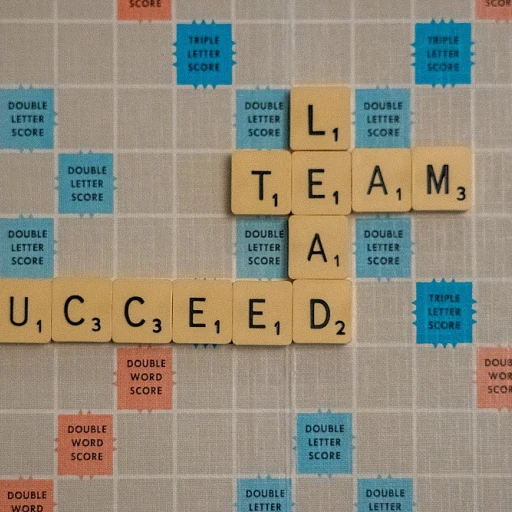
Understanding the Concept of the 8 Wastes
Discovering the Essence of Lean Wastes
The concept of the 8 wastes in lean manufacturing serves as a cornerstone for navigating complex business strategies. Despite the passage of time and continuous improvement in business models, the underlying principles of lean thinking remain pivotal. The term 'waste' in this context does not merely refer to physical material, but to any step or measure within a process that does not add value to the customer experience.
Delving deeper, these wastes are often categorized into transport, inventory, motion, waiting, overproduction, over-processing, defects, and underutilized talent. Each element, whether it's time spent in waiting or the underutilization of skills, can lead to operational inefficiencies and escalate costs unnecessarily.
The concept of lean waste encourages businesses to critically evaluate their production processes. This evaluation enables management teams to identify unnecessary burdens and streamline operations effectively. Lean thinking focuses on value creation and the optimal use of raw materials, fostering a competitive advantage and enhancing customer satisfaction.
In upcoming sections, we'll explore how these wastes manifest in real-world scenarios and how industry leaders are tackling them successfully. There's a pressing need for leaders to recognize these inefficiencies within their processes and strive towards implementing solutions that not only curb costs but also bolster innovation and sustainability.
Understanding and addressing these inefficiencies requires a disciplined approach, often referred to as 'lean sigma', which combines the principles of lean processes with six sigma methodologies. The gemba walk, for instance, is a strategic practice where leaders venture into a working environment to see actual processes, facilitating the identification of waste at its source.
Identifying the 8 Wastes in Your Organization
Spotting Organizational Inefficiencies Through Lean Thinking
Identifying the 8 wastes in an organization requires a keen eye and an understanding of lean thinking principles. The goal is not only to see where inefficiencies lie but to recognize how they impact overall business performance. Let's dive into how you can effectively pinpoint these wastes in your processes.
- Transportation Waste: Examine the unnecessary movement of products or materials. This aspect can slow down the production process and increase costs. A gemba walk can be instrumental in visualizing these movements and understanding their impact.
- Inventory Waste: Excess inventory ties up capital and space. Regularly assess your inventory levels to ensure they match actual demand, reducing costs and freeing up resources for other business areas.
- Motion Waste: Identify any movements by people or equipment that do not add value. Streamlining work processes reduces wasted time and improves worker efficiency.
- Waiting: Delays in the production process or decision-making slow progress. Address these bottlenecks by enhancing process flow and integrating more timely communication.
- Overproduction: Producing more than is needed leads to surplus, which may become obsolete. Align production with real customer demand to reduce this form of waste.
- Overprocessing: Extra processing involves additional, often unnecessary steps in production. Simplifying processes will not only save time but also lower operational costs.
- Defects: Errors in a product or service lead to rework, wasting time and material resources. Implementing quality control measures can significantly reduce defect rates.
- Underutilized Talent: Leverage the full potential of your team's skills and creativity. This involves creating an environment that encourages continuous improvement and innovative thinking.
By undertaking a detailed examination of these types of waste, organizations can begin to understand where lean improvements can be made. For further insights into enhancing operational efficiency with effective process improvement tools, consider exploring advice from industry leaders on how they have successfully managed these lean wastes.
The Strategic Impact of Addressing the 8 Wastes
Strategic Advantages of Tackling Waste
In today's fast-paced market, efficiently addressing the 8 wastes can be a game-changer for your business. Waste is not just an operational hassle but a strategic setback, impacting your bottom line and competitive positioning. Emphasizing lean manufacturing practices can significantly enhance your organization's performance. To grasp the true value of eliminating wastes, consider these strategic impacts:- Cost Reduction: Trimming excess inventory and minimizing defects directly decrease operational costs. By focusing on lean waste, companies can ensure that only necessary resources are deployed, cutting down costs linked to inventory motion and excess inventory.
- Improved Productivity: By eliminating waiting time and motion, businesses streamline their production process. This efficiency allows for quicker response times to customer demands and improved product service delivery, reinforcing customer satisfaction.
- Enhanced Competitive Edge: Addressing lean wastes across your organization not only boosts efficiency but also solidifies your position in the market. Lean thinking embeds a culture of continuous improvement, pushing your company ahead of competitors still grappling with traditional processes.
- Utilizing Talent Better: Lean strategies highlight the importance of utilized talent. By reducing waste, businesses can repurpose their workforce towards more value-added tasks, enabling employees to contribute more effectively and creatively.
- Strong Sustainability Focus: Efforts to reduce excess production, transportation waste, and unnecessary inventory align with sustainable practices. This strategy not only benefits the environment but also appeals to eco-conscious consumers.
Case Studies: Success Stories from Industry Leaders
Success Stories from Pioneering Enterprises
Identifying and tackling the inefficiencies inherent in the 8 wastes—motion, inventory, waiting, defects, transportation, overproduction, unused talent, and over-processing—can transform a company. Let’s delve into how several industry leaders successfully integrated lean thinking and lean sigma strategies, bringing profound improvements in their processes. One enterprise in the manufacturing sector observed a significant reduction in excess inventory by scrutinizing their production system thoroughly. Through continuous improvements and lean manufacturing methodologies, they managed to decrease inventory waste and improve the flow of raw materials, ensuring swift customer satisfaction without unnecessary delays. In another inspiring case, a global automotive giant incorporated lean wastes identification techniques into their daily gemba walks. This proactive approach uncovered issues related to transportation waste and excess motion. By addressing these, they not only streamlined their processes, reducing unproductive motion and unnecessary transportation but also decreased overall production costs while enhancing their workforce's utilized talent. Moreover, a leading tech company focused on eliminating defects and overproduction by employing advanced lean waste principles. By continuously refining their production process and product service offerings, they managed to lower defect rates drastically, fostering a culture of ongoing quality enhancement that reverberated across their operations. These examples underscore a pivotal message: diligently addressing each type of waste through strategic insights can yield tangible benefits and fortify an organization's competitive edge. By dedicating time to eliminating inefficiencies, businesses not only enhance their operational prowess but also open doors to innovative growth opportunities. The commitment to embracing these strategies marks a turning point from conventional methods to a robust lean framework, facilitating not just survival but flourishing in an increasingly demanding market landscape.Implementing Change: Overcoming Challenges
Overcoming Barriers in Lean Implementation
Embarking on the journey to eliminate the eight wastes in your organization can seem daunting. However, addressing the barriers to change is essential for a successful lean transformation. Some common challenges include resistance from employees, insufficient understanding of lean principles, and inadequate resources.
To navigate these hurdles effectively, consider the following approaches:
- Foster a Culture of Continuous Improvement: Engaging employees as active participants can ease the resistance. Encourage a mindset that embraces lean as an opportunity for growth rather than a burden. Providing regular training on waste identification and lean thinking can empower your team.
- Conduct Gemba Walks: Regular gemba walks allow leaders to observe processes firsthand, identify inefficiencies in real time, and understand waste from the ground up. This practice connects management with the realities of production, fostering a collaborative environment to implement lean solutions.
- Ensure Leadership Support: Top-management commitment is crucial. Ensure decision-makers understand the benefits of lean waste elimination and are willing to allocate resources for training and development.
- Utilize Data-Driven Insights: Leverage data analytics to pinpoint areas where time, excess inventory, or other forms of wastes accumulate. A clear understanding of these areas can help prioritize actions that lead to significant improvements.
- Tailor Communication Strategies: Customize messaging about lean initiatives to fit various departmental needs. Clear communication lines regarding the impact of inventory waste reduction and process optimization can alleviate fears and align goals.
Implementing these strategies can effectively reduce manufacturing delays, excess inventory, and transportation waste, ultimately leading to enhanced product service and customer satisfaction. The ripple effect is a well-aligned production system that streamlines processes, reduces defects, and minimizes costs.














